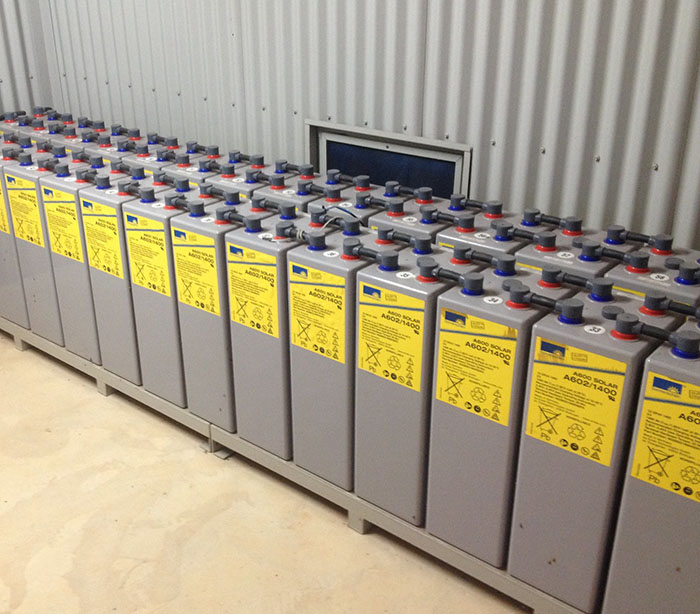#MoveTheDate
The addition of widespread energy storage capabilities for renewable sources could move the date of Earth Overshoot Day 15 days. This is in addition to the impact that the massive adoption of renewable energy without storage would have.
What is the solution?
Increasing energy storage capacity to allow for the widespread adoption of intermittent energy sources such as wind and solar power. Without effective energy storage, there will always be a need for consistent ‘base-load’ energy sources.
This solution improves our resource security in the energy category.
How does it #MoveTheDate?
Energy storage allows energy produced by solar panels during the brightest time of the day to be stored and used over time. Improved energy storage would allow renewable energy to power a much larger portion of the electric grid than it currently does.
How is it scalable?
Apart from hydropower, there are few utility-scale energy storage facilities in operation. Studies have found that there is no need for energy storage until renewables exceed about 35% of annual electricity produced. As the proportion of renewables expands, especially wind and solar, the need for energy storage will increase.
What is the solution?
Increasing energy storage capacity to allow for the widespread adoption of intermittent energy sources such as wind and solar power. Without effective energy storage, there will always be a need for consistent ‘base-load’ energy sources.
This solution improves our resource security in the energy category.
How does it #MoveTheDate?
Energy storage allows energy produced by solar panels during the brightest time of the day to be stored and used over time. Improved energy storage would allow renewable energy to power a much larger portion of the electric grid than it currently does.
How is it scalable?
Apart from hydropower, there are few utility-scale energy storage facilities in operation. Studies have found that there is no need for energy storage until renewables exceed about 35% of annual electricity produced. As the proportion of renewables expands, especially wind and solar, the need for energy storage will increase.
Energy storage is essential to enable widespread adoption of intermittent energy sources such as wind and solar power. We know that the energy transformation requires electrification of our energy systems, but a powerful electric grid run on renewables also has its challenges. A California-based study has shown that without access to energy storage, wind and solar can only eliminate 72% of carbon emissions from electricity production. This would also require a significant excess of renewable capacity compared to the total amount of energy required (approximately 25-30% more). Such excess would sit unused during periods of high energy production, and supply must be purposefully reduced to meet demand. This is called “renewable curtailment”.
There are already regions of the world, such as Germany and California, where available solar energy exceeds demand at midday on particularly sunny days. To further complicate things, traditional thermal power plants are slow in adjusting their power output. This means they have limited flexibility in terms of how quickly they can either increase or curtail their production. With energy storage in place, wind and solar can power the electric grid to a much larger degree, up to 90% according to the study. Other renewable sources for electricity production have more ability to adjust to different demand profiles. In the case of hydropower, for example, the flow of river water can be reduced during low energy demand and increased during peaks. But too much variation in water flow can have detrimental ecological effects, particularly for all the living organisms in rivers.
Lakes and particularly water storage in mountains can be used for large scale energy storage; excess electricity is used to pump water into storage, and then the water is released to power electric turbines. This process comes with some efficiency loss in the order of 20%. This 20% is the physical cost of upgrading electricity from excess production times and providing it during excess demand times. Large mountain lakes can provide seasonal storage, but this is even more expensive.
Stored biomass could be among the most cost-effective seasonal storage options. Biomass can be gasified to run efficient turbines during cold and cloudy conditions when solar production is at its lowest.
Batteries are becoming more effective at leveling loads; Today, there are many households using batteries to operate off the grid.
There’s no benefit in waiting!
Acting now puts you at a strategic advantage in a world increasingly defined by ecological overshoot. Countless solutions exist that #MoveTheDate. They’re creative, economically viable, and ready to deploy at scale. With them, we can make ourselves more resilient and #MoveTheDate of Earth Overshoot Day. If we move the date 6 days each year, humanity can be out of overshoot before 2050.

